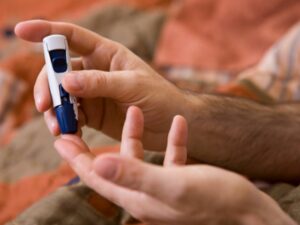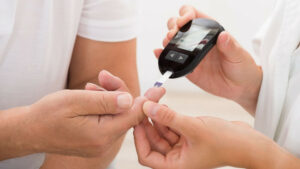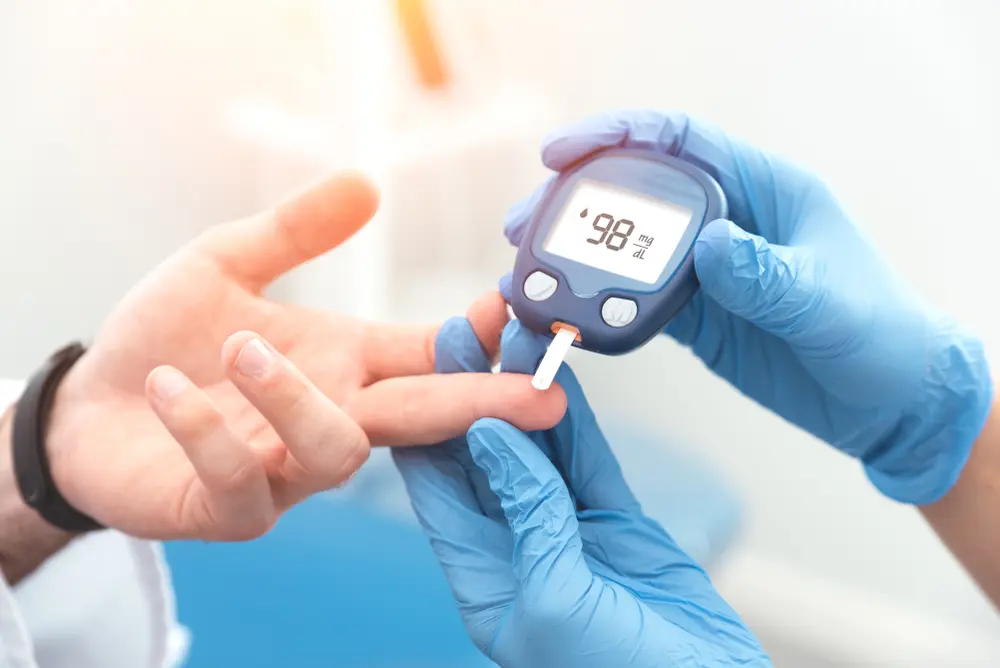Welcome to our blog post on managing postprandial hyperglycemia, a condition characterized by high blood sugar levels after meals. Whether you’re living with diabetes or simply seeking to understand and optimize your metabolic health, this blog will provide valuable insights and postprandial hyperglycemia treatment practical strategies to help you effectively. From understanding the causes and consequences to implementing lifestyle changes and medical interventions, we’re here to empower you on your journey towards better blood sugar control and overall well-being.
Contents
What Is Postprandial Hyperglycemia?
 Postprandial hyperglycemia refers to elevated blood sugar levels that occur after consuming a meal. In individuals with diabetes, particularly type 2 diabetes, the body’s ability to regulate blood glucose becomes impaired, leading to fluctuations in postprandial glucose levels. This condition is characterized by a rise in blood sugar typically within 1 to 2 hours after eating, reaching levels above the normal range.
Postprandial hyperglycemia refers to elevated blood sugar levels that occur after consuming a meal. In individuals with diabetes, particularly type 2 diabetes, the body’s ability to regulate blood glucose becomes impaired, leading to fluctuations in postprandial glucose levels. This condition is characterized by a rise in blood sugar typically within 1 to 2 hours after eating, reaching levels above the normal range.
This condition can pose significant health risks, as prolonged periods of elevated blood sugar can contribute to diabetes-related complications. Such as cardiovascular disease, nerve damage, and kidney dysfunction. The onset of postprandial hyperglycemia is often influenced by various factors including the composition and size of the meal, insulin resistance, and the body’s capacity to produce or utilize insulin effectively. Understanding and managing postprandial hyperglycemia is crucial for individuals with diabetes to maintain optimal blood sugar control and prevent associated health complications.
What Drugs Are Used For Postprandial Hyperglycemia?
Several drugs are used to manage postprandial hyperglycemia in individuals with diabetes. Some common classes of medications include:
Alpha-glucosidase inhibitors
These drugs, such as acarbose and miglitol, work by slowing down the digestion and absorption of carbohydrates in the intestines. By delaying the breakdown of carbohydrates into glucose, alpha-glucosidase inhibitors help to reduce postprandial blood sugar spikes.
Dipeptidyl peptidase-4 (DPP-4) inhibitors
Medications like sitagliptin, saxagliptin, and linagliptin inhibit the enzyme DPP-4. This, in turn, increases the levels of incretin hormones. These hormones stimulate insulin release and inhibit glucagon secretion, leading to lower blood sugar levels, particularly after meals.
Glucagon-like peptide-1 (GLP-1) receptor agonists
Drugs such as exenatide, liraglutide, and dulaglutide mimic the action of GLP-1, a hormone that increases insulin secretion, reduces glucagon release, and slows gastric emptying. GLP-1 receptor agonists are effective in lowering postprandial glucose levels and also promote weight loss.
Insulin
Rapid-acting insulin analogs, such as insulin lispro, insulin aspart, and insulin glulisine, are often used to manage postprandial hyperglycemia, especially when other oral medications are not sufficient. These insulins are injected shortly before meals to mimic the body’s natural insulin response to food intake.
Sodium-glucose cotransporter-2 (SGLT-2) inhibitors
Drugs like canagliflozin, dapagliflozin, and empagliflozin work by blocking the reabsorption of glucose in the kidneys. Ultimately, leading to increased glucose excretion in the urine. SGLT-2 inhibitors can help lower postprandial blood sugar levels and also have additional benefits for cardiovascular and renal health.
Individuals with diabetes need to work closely with their healthcare providers. This will help to determine the most appropriate medication regimen for managing postprandial hyperglycemia based on their specific needs and medical history.
What Is The Best Postprandial Hypoglycemia Treatment?
 Postprandial hypoglycemia treatment, which refers to low blood sugar levels occurring after meals, depends on the underlying cause and severity of the condition. Here are some general strategies that may be used:
Postprandial hypoglycemia treatment, which refers to low blood sugar levels occurring after meals, depends on the underlying cause and severity of the condition. Here are some general strategies that may be used:
Dietary adjustments
Managing postprandial hypoglycemia often begins with careful attention to dietary choices. Consuming smaller, more frequent meals throughout the day rather than a few large meals can help prevent rapid fluctuations in blood sugar levels. It’s essential to focus on a balanced diet that includes complex carbohydrates, lean proteins, and healthy fats. Complex carbohydrates, such as whole grains, vegetables, and legumes, are broken down more slowly in the body. This further leads to a gradual release of glucose into the bloodstream and prevents sudden spikes or drops in blood sugar.
Monitoring blood sugar levels
Regular monitoring of blood glucose levels, especially after meals, is essential for individuals experiencing postprandial hypoglycemia. This allows for the identification of patterns and triggers that may contribute to episodes of low blood sugar. By tracking blood sugar levels closely, individuals and their healthcare providers can make informed decisions about dietary adjustments, medication dosages, and timing to help prevent hypoglycemic episodes. Continuous glucose monitoring (CGM) systems can be particularly helpful in providing real-time data on blood sugar levels and trends.
Medication adjustments
For individuals with diabetes who are experiencing postprandial hypoglycemia, adjustments to medication regimens may be necessary. This may involve modifying the dosage or timing of medications such as insulin or sulfonylureas, which can lower blood sugar levels and increase the risk of hypoglycemia, particularly after meals. Healthcare providers can work with individuals to optimize their medication regimens based on factors such as their diet, activity level, and blood sugar monitoring results.
Snacking
Incorporating small, balanced snacks between meals or before bedtime can help prevent drops in blood sugar levels and reduce the risk of postprandial hypoglycemia, especially if there is a long gap between meals. Snacks should include a combination of carbohydrates, protein, and healthy fats to provide sustained energy and help stabilize blood sugar levels. Examples of suitable snacks include a piece of fruit with nut butter, yogurt with berries, or whole-grain crackers with cheese. Planning and carrying healthy snacks when away from home can help individuals avoid situations where they may become overly hungry and prone to hypoglycemic episodes.
Medical interventions
In cases of severe or persistent postprandial hypoglycemia that do not respond to dietary and medication adjustments, medical interventions may be necessary. Medications such as diazoxide or octreotide may be prescribed to inhibit insulin release from the pancreas and prevent episodes of hypoglycemia. These medications are typically reserved for individuals with severe hypoglycemia unawareness or those who are not responsive to other treatments.
Surgical interventions, such as pancreatic surgery or gastric bypass surgery, may also be considered in some cases. Particularly if there is an underlying anatomical or functional abnormality contributing to postprandial hypoglycemia. However, these interventions are typically reserved for rare and severe cases and require careful consideration of potential risks and benefits.
Overall, when choosing postprandial hypoglycemia treatment, it is important to work closely with healthcare providers to identify the underlying cause and develop a personalized treatment plan.
Is 230 Sugar Level High After Eating?
 A blood sugar level of 230 mg/dL after eating is considered high and may indicate postprandial hyperglycemia. Especially if this reading was taken within 1 to 2 hours after a meal. In individuals without diabetes, blood sugar levels typically rise slightly after eating but usually remain below 140 mg/dL. However, in people with diabetes, the body’s ability to regulate blood sugar levels may be impaired, leading to higher postprandial glucose readings. A reading of 230 mg/dL suggests that the body may be struggling to adequately process and utilize the carbohydrates consumed during the meal. Thus, resulting in elevated blood sugar levels.
A blood sugar level of 230 mg/dL after eating is considered high and may indicate postprandial hyperglycemia. Especially if this reading was taken within 1 to 2 hours after a meal. In individuals without diabetes, blood sugar levels typically rise slightly after eating but usually remain below 140 mg/dL. However, in people with diabetes, the body’s ability to regulate blood sugar levels may be impaired, leading to higher postprandial glucose readings. A reading of 230 mg/dL suggests that the body may be struggling to adequately process and utilize the carbohydrates consumed during the meal. Thus, resulting in elevated blood sugar levels.
Persistently high blood sugar levels, particularly after meals, can increase the risk of diabetes-related complications over time. Therefore, individuals with diabetes need to monitor their blood sugar levels regularly, especially after eating. Also, take proactive steps to manage and control their glucose levels through lifestyle modifications, medication management, and regular medical follow-up.
Consulting with a healthcare provider to develop a personalized treatment plan and making appropriate adjustments to diet, medication, and lifestyle habits can help individuals achieve better blood sugar control. Ultimately, reduces the risk of complications associated with postprandial hyperglycemia.
Conclusion
In conclusion, postprandial hyperglycemia treatment is crucial for individuals with diabetes to maintain their health and well-being. By making simple yet impactful changes such as adjusting dietary habits, monitoring blood sugar levels regularly, and working closely with healthcare providers to optimize medication regimens, individuals can take proactive steps towards better blood sugar control. Remember to incorporate balanced meals, stay physically active, and seek support from healthcare professionals and peer groups.
This will surely empower individuals to navigate the challenges of postprandial hyperglycemia effectively. With dedication and persistence, it’s possible to achieve stable blood sugar levels and reduce the risk of diabetes-related complications. Do you want to get rid of diabetes? Join our online diabetes treatment program and reverse Diabetes naturally through lifestyle changes such as a Personalized Diet plan, Exercise, Yoga, dieticians, and health coaches.

